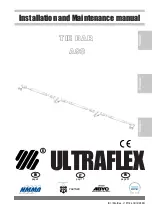
Glossary
©
National Instruments Corporation
G-9
PCI-Based MXI-2 Interfaces for Windows 2000/NT/Me/98
T
trigger
Either TTL or ECL lines used for intermodule timing
TTL
Transistor-Transistor Logic
U
user window
A region of PCI address space reserved by the PCI-MXI-2 or PXI-8320 for
use via the NI-VXI low-level function calls.
MapVXIAddress()
and
viMapAddress
use this address space to allocate regions for use by the
VXIpeek()
,
viPeekX
,
VXIpoke()
, and
viPokeX
macros.
V
VIC
VXI Interactive Control Program, an optional part of the NI-VXI bus
interface software package. Used to program VXI devices, and develop and
debug VXI application programs
VISA
Virtual Instrument Software Architecture. This is the general name given to
VISA and its associated architecture. The VISA specification, standardized
by the VXI
plug&play
Systems Alliance, defines an interface-independent
I/O API for VXI, VME, GPIB, GPIB-VXI, Serial, and TCP/IP. It is the
standard on which modern instrument drivers rely for I/O.
VISAIC
VISA Interactive Control utility, a part of the NI-VISA software.
It provides access to all I/O resources and all VISA functionality
interactively, and is a convenient starting point for program development
and learning about VISA.
VME
Versa Module Eurocard or IEEE 1014
VMEbus System
Controller
A device configured for installation in Slot 0 of a VXIbus mainframe or
Slot 1 of a VMEbus chassis. This device is unique in the VMEbus system
in that it performs the VMEbus System Controller functions, including
clock sourcing and arbitration for data transfers across the backplane.
Installing such a device into any other slot can damage the device, the
VMEbus/VXIbus backplane, or both.
VXIbus
VMEbus eXtensions for Instrumentation






































